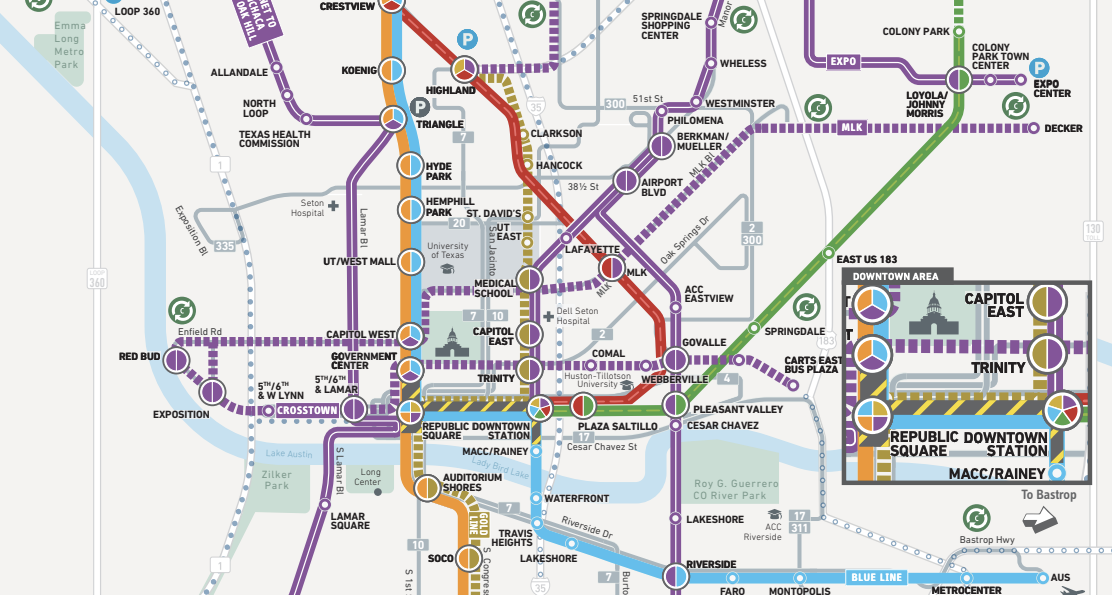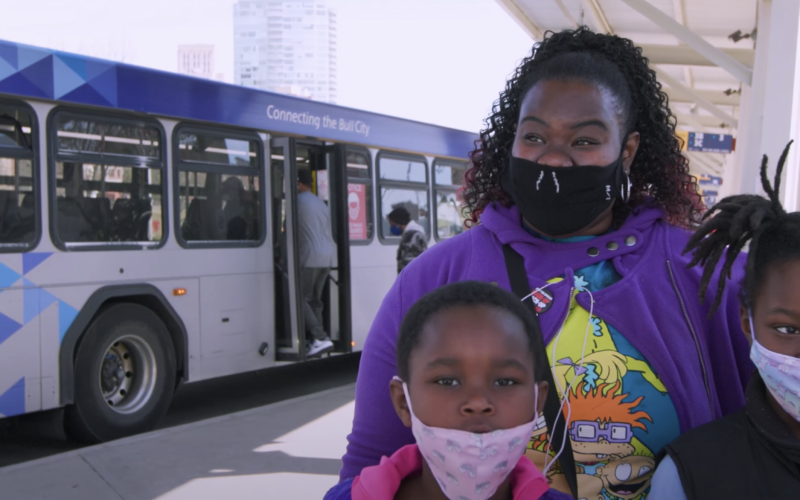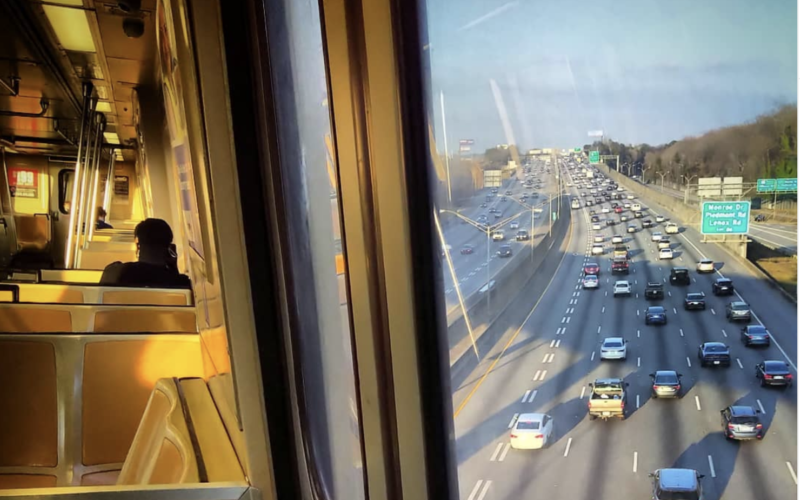
Transit planners in Austin are expected to release a pared-back version of the Project Connect plan at the end of March, meaning transit riders might have to settle for less than what they originally approved.
Even during a pandemic that has severely reduced transit ridership and created uncertainty about household budgets, voters on November 3 recognized the value of transit and decided to ramp up public investment in their local systems. Most local transit measures on the ballot carried the day.
The signal voters sent is worth a close look. Among the few failures on election day were transportation packages with project lists designed to appeal to people who don’t ride transit. The strategy of diluting transit investment to get more votes may have worked in the past, but the winning formula this cycle was different.
In Austin, San Antonio, Seattle, and other cities, voters not only supported transit — they supported smart, rider-focused transit investment. These winning initiatives will benefit entire transit networks by investing in frequent service on several routes. And in Austin, high-capacity expansion projects will be built where such large-scale investment is justified — within walking distance of where lots of people live and work.
That isn’t always the case with transit ballot measures. In Denver and Los Angeles, past initiatives have tilted heavily toward capital investment in far-flung expansion projects, overlooking the needs of current riders and neglecting the core transit network in the bid to secure a winning margin on election day. Despite all the transit spending, ridership in both places stagnated or fell.
In the current election cycle, the ballot initiative that best exemplified the politically-driven approach was the Portland region’s measure 26-218. The $5 billion project list would have funded many worthy street safety improvements, but also included several highway and road expansions. The main transit component was a new light rail line extending to a low-density suburb with questionable ridership projections — not a systemic improvement that many Tri-Met riders could see themselves benefitting from. The measure garnered merely 42% support at the polls — the only decisive defeat for a major transportation referendum this cycle — in a region where the Biden/Harris ticket captured nearly 71% of the vote.
The results in Portland suggest there’s more to winning transportation ballot measures than timing the vote to coincide with a high-turnout general election and promising a project to every jurisdiction in the region, regardless of merit.
The successful referendums got the policy correct too, asking voters to support transit investment that will deliver tangible benefits to riders at a citywide scale — boosting operating budgets or making capacity upgrades in a way that improves service on many routes. Notably, they also tended to be administered at the city level, where the constituency for transit investment is strongest, not the regional level, where project lists are often compromised in order to woo voters who don’t envision themselves riding transit.
Austin’s Proposition A was the biggest transit initiative to pass in 2020, raising about $7 billion from a local property tax increase to fund a suite of improvements known as Project Connect. The scope is more ambitious than Austin transit measures that came up short in the past — and it sailed through with a resounding 19% margin of victory.
Among the many factors that contributed to the measure’s success, Project Connect is based on sound transit planning. Unlike Austin’s previous transit referendum, a failed 2014 proposal that called for a new rail line but avoided Austin’s major employment center, Project Connect will construct a rail route along the Guadalupe-Lamar corridor. And where earlier transit packages mapped out a line or two, Project Connect lays out a network of high-capacity, frequent transit service on several routes, as well as housing investments through a $300 million “anti-displacement fund.”
The big win at the ballot box follows significant service improvements from Austin’s transit agency, Capital Metro, which gave residents a taste of what they would be voting for. In 2018, Cap Metro increased service and debuted a redesigned bus network, leading to a rise in ridership. In the planning process for Project Connect, the agency strived for broad public inclusion, seeking ideas from grassroots organizations and community groups on spending priorities. The agency estimates that 60,000 Austin residents helped inform the development of Project Connect.
In San Antonio, the passage of Proposition A with 68% of the vote will redirect 0.125% of existing sales tax to VIA, the regional transit agency, starting in 2026. (The funds — about $38 million annually — will support workforce and economic development programs until then.) VIA intends to use the new resources to improve frequency across its bus network and plan for capacity upgrades along high-ridership lines.
VIA has built public credibility in recent years with a track record of rider-focused investment. The agency’s bus stop improvement program is one of the nation’s most ambitious, and it translated a 2019 budget increase into greater frequency on 18 bus routes.
Before the pandemic struck, VIA was one of the few American transit agencies bucking national trends and increasing ridership. While there will be a lag before the agency can access the new funds, the momentum that VIA carried into 2020 helped secure a vote that bodes well for the long-term prospects of transit in San Antonio.
And in Seattle, city voters approved a 0.15% sales tax increase to support King County Metro. The measure will raise $41-47 million annually, with most funds devoted to bus service and some set aside for discount fare programs and infrastructure maintenance.
Like San Antonio and Austin, Seattle transit was on a roll before 2020, with well-planned rail additions and major bus service expansions causing a steady uptick in ridership. But with COVID battering King County Metro’s budget, the main upshot of enacting this measure will be the prevention of service cuts. Campaigners emphasized that Seattle residents continued to rely on transit for essential trips despite a ridership decline of 60% during the pandemic, a message that helped propel the initiative to 82% support at the ballot box.
Transit agencies all over the nation are dealing with COVID-induced fiscal shortfalls that threaten their continued ability to provide service. With or without federal aid to cover those budget gaps, they will need to be resourceful to acquire the resources to maintain or improve service. For cities in a position to raise that revenue via referendum, this year’s ballot measures sent an optimistic signal: There is no tension between a funding package that works for transit riders and one that wins at the polls.
 Envisioning a Federal Program to Increase Transit Service
Envisioning a Federal Program to Increase Transit Service
How might a federal program to fund transit service be structured? What difference would it make for transit riders?
Read More How Long Until Atlanta Transit Riders Get More MARTA?
How Long Until Atlanta Transit Riders Get More MARTA?
Four years after the More MARTA referendum, what improvements are now tangible for Atlanta transit riders, and what can riders expect to see in the next four?
Read More